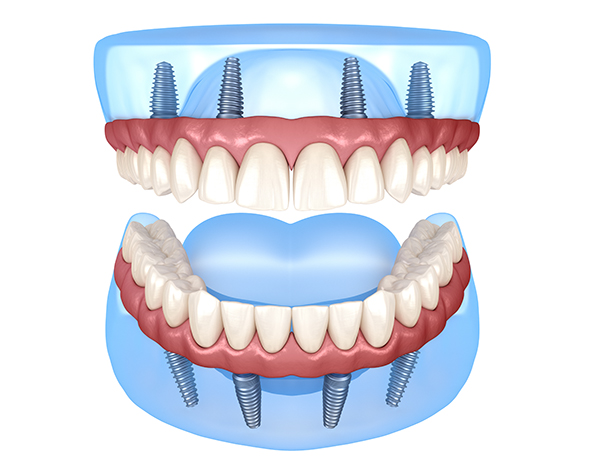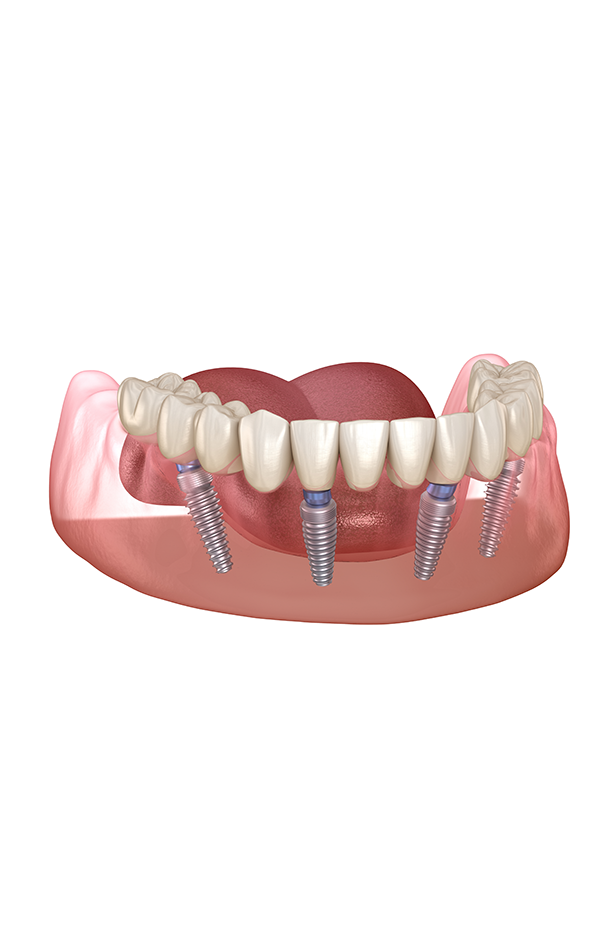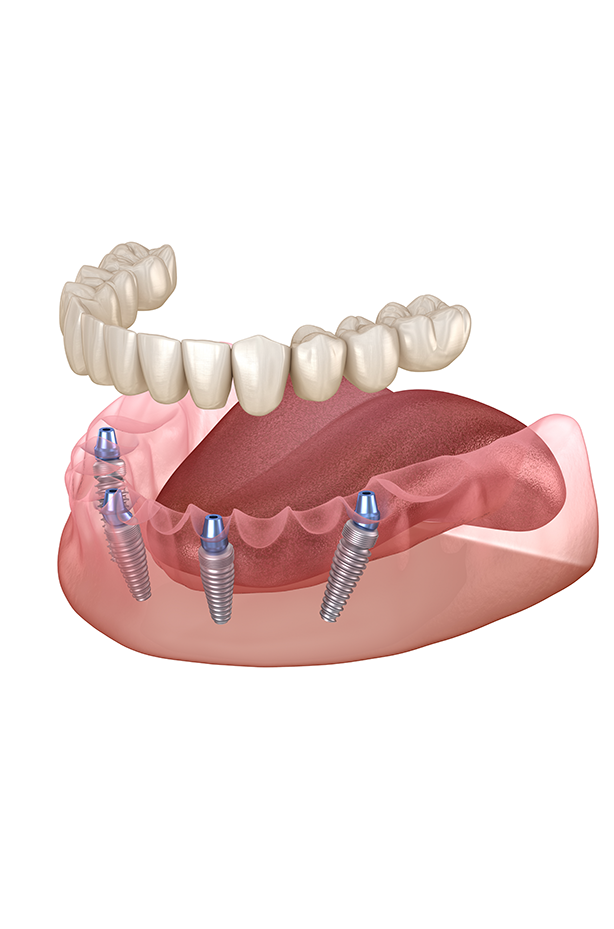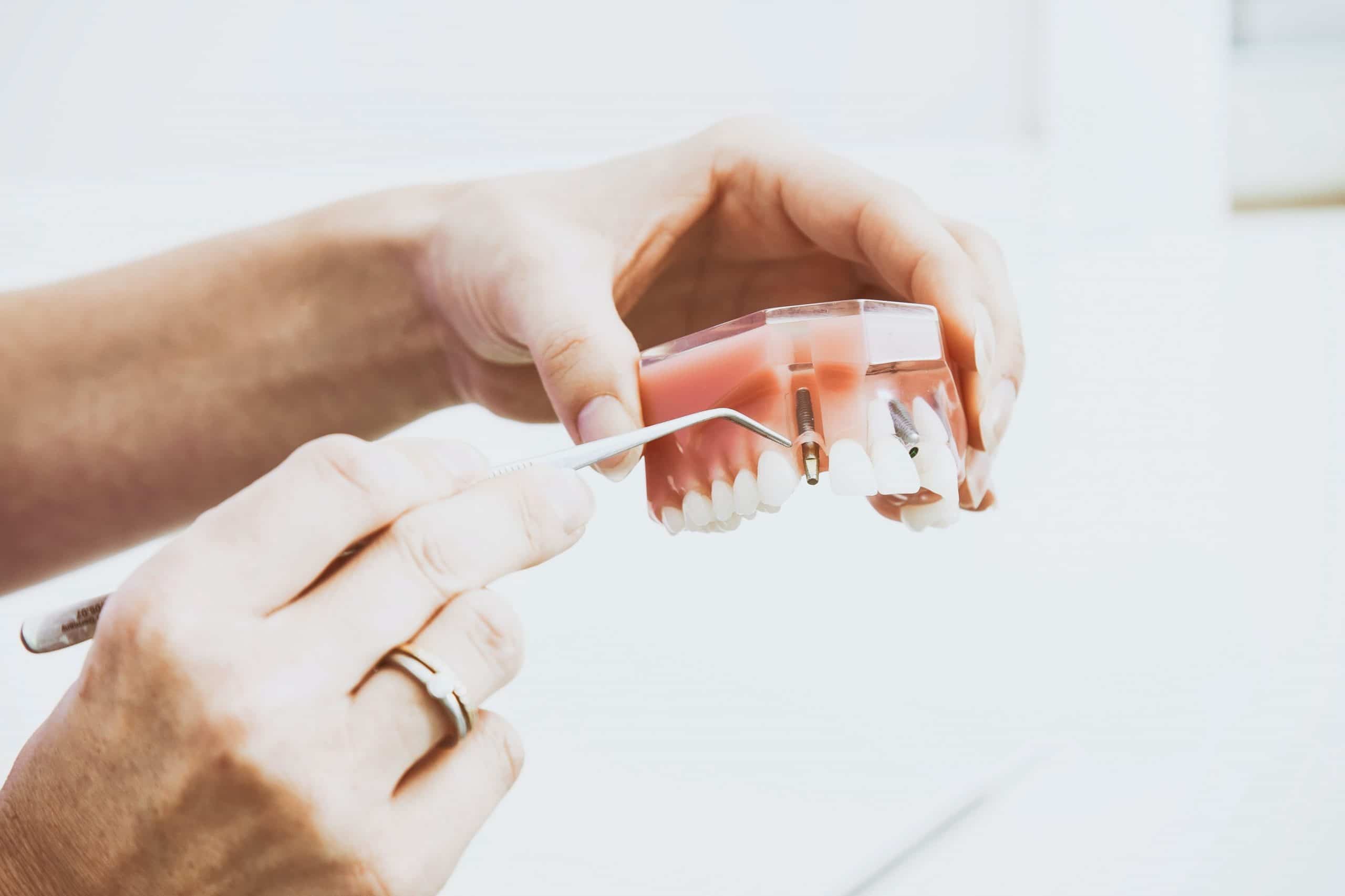
What are teeth on Implants?
Traditional dentures are akin to have a full or partial set of removable teeth. They offer the appearance of a natural smile, but denture wearers agree they don’t feel quite the same. Dentures often feel unstable and can easily slip while talking, eating, or drinking. They are also designed to be removed for cleaning and care.
Teeth on implants solve many of the challenges associated with regular dentures. These implants also provide a full set of either upper or lower teeth. The main difference is that they’re a more permanent option because they’re implanted in your jawbone.
Similar to single dental implants, teeth on implants leverage metal, surgically inserted posts (four, to be exact) to hold the artificial teeth in place. But unlike single dental implants, teeth on implants do not need to be placed individually. You can get a full set of upper or lower teeth with just four implants.




As with many cosmetic dental procedures, teeth on implants is a major change to your body. It’s important to understand the procedure and set the right expectations, as well as consider other options that might be a better fit for you.
During our initial consultation, we’ll answer any questions you may have, explain the process in detail, and discuss specifics like timeline and cost. These can vary by patient, depending on things like the need for bone grafts, your dental insurance, and material (acrylic or porcelain).
Our goal during this stage is to make you an informed patient so you can make the best choice for your future.

If you’re a good candidate for teeth on implants, your oral surgeon will precisely place four titanium posts into your jawbone. These posts will act like artificial roots for your dentures.
The posts will be fully covered by your dentures once the procedure is completed, leaving you with an all-natural look and feel. However, your jawbone will need time to heal from the insertion of the implants prior to receiving the full denture arch.
In many cases, the healing process for an All-on-4 implant procedure is quicker compared to individual implants. This system fuses to your bone much faster, which lends to its stability.

Once your jawbone has healed from the implantation, you’re ready to receive your permanent denture. The denture is attached to the four posts, which serve as the main anchors.
The result is an even, consistent-looking smile without the risk of your dentures slipping or falling.

Our patient was suffering from:
- teeth breaking down over time
- Unable to eat properly
- failing bridge as it is loose
- Other teeth breaking down
- Poor smile
After a consultation discussing repair, dentures and other options the patient decided on teeth on implants treatment;
- concern with repairs is that it would be temporary. In this case it was not possible to fix properly given the breakdown of the existing teeth
- patient did not want a denture that would be taken in and out
- patient wanted a long lasting, strong, fixed option that improved the smile
- in this case the best option moving forwards was “all on 4”
View the case study PDF to view the process and results.
Educational articles
How Painful Are Dental Implants? Understanding The Process
Any procedure that is undergone, no matter how small, will carry with it feelings of pain. However, one individual’s perception of pain can be very different from another’s.
What Are Dental Implants? Advantages of Dental Implants
Dental implants are essentially artificial teeth that will look, feel and act like real teeth would. What dental implants are not is false teeth or dentures.
How Much Do Dental Implants Cost in Australia? [2024]
As with any dental procedure, estimating the cost before knowing the full extent of treatment needed is almost impossible. The work that somebody may need in their mouth can vary hugely from person to person, and this is true for dental implants as well.


